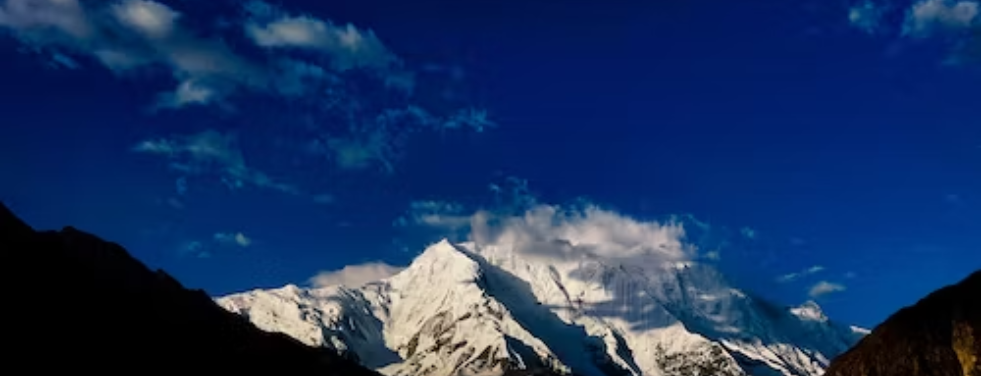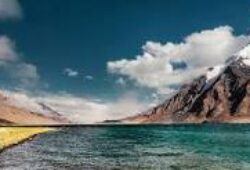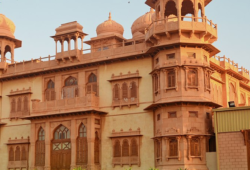Khaplu
 Posted On
Posted On
Khaplu is a beautiful village for tourism just a few kilometers east of Skardu with picturesque terraced fields growing a variety of crops.
Khaplu was once a famous and rich kingdom and Khaplu Palace was once the residential fortress of the local ruler.
Recently, the Aga Khan expressed interest in the palace, which has now been renovated into an excellent hotel where our guests will stay.
Khaplu is a focal point for exploring some remarkable lakes, hiking trails and the gateway to the Hushe Valley, which leads to several striking peaks and glaciers.
With its vibrant and fragrant fruit orchids, breathtaking views of streams, tall soaring mountains and architectural heritage.
Khaplu is an unrivaled tourist attraction that epitomizes beautiful Pakistan. Little Tibet’ is the administrative town of Ghanche District.
The valley is at a distance of 112 km towards the east from Skardu. The valley stretches along the Shyok River, a tributary of the Indus River, alongside the old trade route to Ladakh.
Main tourist attractions
It is one of the scenic valleys in the neighborhood of Skardu that serves as a base for the trek towards Mashebrum Peak, Gondogoro, Chogolisa, K-6 and K-7.
For mountaineers and trekkers, Khaplu is the gateway to Mashebrum Glacier, Machlu Broq, Saraksa Glacier, Daholi Lake, Ghanche Lake and Bara Lake which are major attractions in Khaplu.
Khaplu was the second largest kingdom of the Yabgo dynasty in ancient Baltistan, which guarded the old trade route.
Chaqchan Mosque (Urdu: مسجد چقچن) meaning “Miracle Mosque” in Khapl is one of the oldest and largest mosques in the region.
Mosque
The mosque, an architectural heritage, is believed to have been built 700 years ago in 1370 AD by Mir Syed Ali Shah Hamdani, the first preacher of Islam in the region who converted people from Buddhism. The architecture of the Chaqchan Mosque is a pristine blend of Persian, Tibetan and Mughal architecture reminiscent of others built in the Kashmir Valley.
The mosque consists of a cubic complex with two floors, a basement, a ground floor with a minaret or tower.
Building
The walls of the cube structure are built using an ancient Roman building technique called Opus Craticum to make the building suitable for harsh weather.
In this technique, the structure is weatherproofed by stacking wooden boards into the frame and the spaces inside are filled with clay.
Khaplu Khanqah, is another important architectural monument and is also known as the Great Khanqah Prayer Hall.
The Khanqa was built by Syed Muhammad, a saint of the Nurbakhshiya sect, in 1712 AD with the Astana tomb restored by the Agha Khan Trust for Culture, Pakistan.
Khaplu Palace, the former royal residence of the Raja (ruler) of Khaplu, is an architectural gem that has turned out to be a major tourist attraction in Khaplu.
Palace
The Raja Palace, locally known as “Yabgo Khar” meaning “Fort of Doqsa” (Balti: دوقسہ کھ), was built in the mid-19th century by Yabgo Raja Daulat Ali Khan of Khapl.
In order to select a site for the palace, a large stone was rolled from a nearby cliff and the palace was built where it stopped at the village of Doqsai.
The people of Khaplu, who lived inside the Khaplu fort, could not build their homes outside its premises because of ongoing conflicts with the neighboring rulers.
The fort has 21 rooms, six of which are inside the palace building, while another area serves as a museum.
Museum
The dilapidated palace was restored by the Agha Khan Trust for Culture in 2011 and the palace houses a cultural museum in addition to a hotel occupying most of the space.
The picturesque Khaplu Palace is the last Tibetan-style palace in Pakistan, where Yabgo’s descendants continued. they live long after their kingdom was abolished in 1972.
The architecture of the palace explicitly displays hints of the various cultures of Balti, Tibet, Kashmir and the Ladakh region. The four-storey building was built by Baltic and Kashmiri craftsmen from wood, clay and mud bricks.
Yagbo Raja Hatim Khan brought a carved wooden door from the fort at Skardu and erected it at the entrance of the palace when he was returning after conquering most of the areas of Baltistan.
Sources: wildfrontierstravel | guidetopakistan


